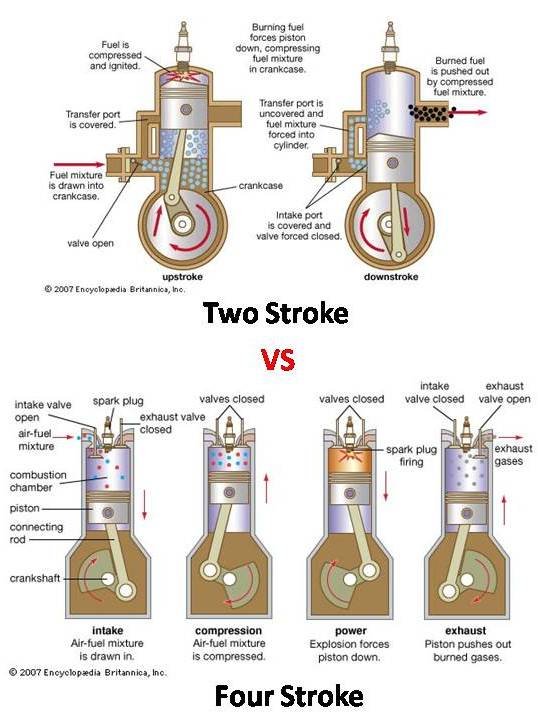Two Stroke vs. Four
While the debate over which engine is better, the two-stroke or the four-stroke, is as hotly contested as ever, it may become a moot point in a few years as legislators push to completely end the production of new two-stroke ATVs. So if you are considering buying a new two-stroke, there may not be much time left for you to make your purchase.
Basically the difference between a two-stroke and a four-stroke is that a two-stroke fires once per cylinder per revolution of the cam, where a four-stroke fires once per cylinder every two revolutions of the cam. Without taking anything else into account, a two-stroke will fire twice as often as a four-stroke, producing much more power with the same displacement. Sure sounds like a two-stroke is a no-brainer, eh? Not so fast. There are several drawbacks to the two-stroke design and performance of a two-stroke.
The gasoline in a two-stroke must have oil added to it for proper lubrication and heat dissipation. Because this oil is in the combustion chamber, a two-stroke produces a lot of smoke, which is the main reason for the impending ban on new two-stroke ATVs.
A side effect of all the power that a two-stroke produces is that the engine must be periodically rebuilt. These maintenance rebuilds are not extremely complicated or expensive, but if not performed will lead to a costly full engine rebuild.
For many ATV riders, this constant maintenance is an acceptable tradeoff for the extra power and performance they get from a two-stroke. But this power is only available at nearly wide- open, since the power band is in the extremely high end of the engines RPM range. This is fine, as long as you can keep it there. But often, having to shift or back off causes you to lose that power advantage. Two-strokes are widely used in racing ATV applications, since the experienced rider can use that amazing power to quickly accelerate out of corners and into jumps.
Four-strokes, on the other hand, require much less maintenance than a two-stroke. Spark plug and oil changes are needed on a regular basis, but the frequent rebuilds of a two-stroke are not. If an engine rebuild is necessary, a four-stroke is quite a bit more expensive to rebuild than a two-stroke.
There is no need to mix oil into your gasoline for the four-stroke, so it produces a lot less smoke than a two-stroke does.
As far as performance goes, the four-stroke does lack the sheer power of a two-stroke at its peak, but a four-stroke’s power is available through a much wider RPM range than the two-stroke. There is no need to run at wide-open all the time, and leads to a much more leisurely and quieter riding experience. The low-end torque of a four-stroke is much handier when climbing difficult terrain, negotiating mud, or hauling heavy loads than a two-stroke’s extreme high-RPM power. In fact, a four-stroke can get out of a full stop in mud, where a two-stroke will usually be completely stuck. And a four-stroke ATV often has a higher top speed than a two-stroke, but will take longer to get there.
In general, four-strokes are better used in recreational ATV riding, hauling, difficult terrain, and such. A two-stroke, on the other hand, will tend to be better suited for racing and light sport ATVs.





